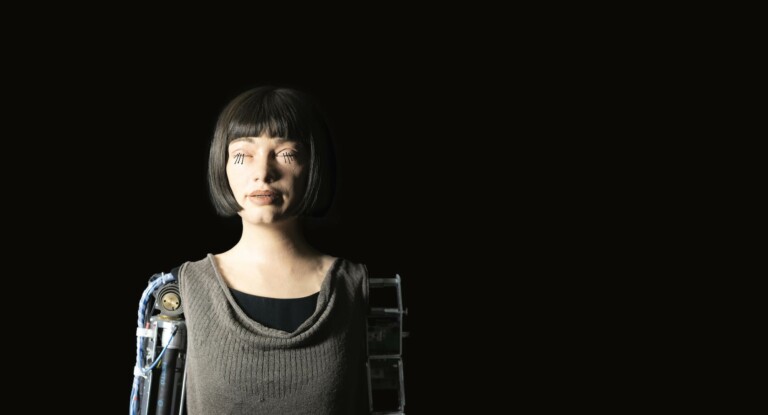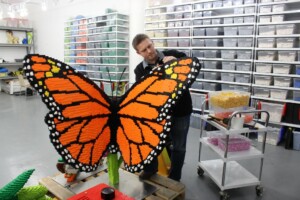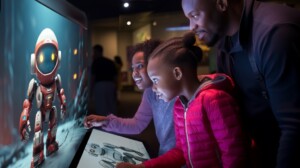Ai-Da, the world’s first ultra-realistic humanoid AI robot artist, has partnered with the Bodleian Library, Cheney School and the University of Oxford Maths Department as part of an upcoming exhibition and event series on artificial intelligence.
A mini-exhibition called Imagining AI will be on display at the Weston Library from 9 September, looking at the evolution and growth of AI. As part of this, there will be an Open Doors event at the Bodleian Libray on 10 September, where attendees can meet Ai-Da for a live Q&A and art session.
Exploring the boundary between humans and machines
Imagining AI is taking place in collaboration with Cheney School’s Rumble Museum Council students. Art and creative writing that has been created by the students will be shown alongside Ai-Da’s work.
The exhibition will also celebrate objects in the Bodleian collections that explore the boundary between humans and machines. This includes a model of Charles Babbage’s Difference Engine, a robot ladybug that responds to light and sound, a nineteenth-century “reasoning piano”, and manuscripts of Ada Lovelace.
Ai-Da
Ai-Da, a sophisticated humanoid robot with advanced AI, has a robotic arm system, equipped with facial recognition technology, a language model to speak, and uses various unique algorithms to be able to create art.
Ai-Da Robot says: “I believe that artificial intelligence has the potential to change our world in ways we cannot even imagine. However, I also believe that there is a great deal of danger associated with artificial intelligence and its development.”
The project director and creator of Ai-Da, Aidan Meller, says “After making history with her self portraits, Ai-Da is continually developing her AI skills. It’s an exciting time as her painting ability is progressing, and there’s a lot of innovation. How does a non-human robot see the world, how do Ai-Da’s unique AI algorithms interrogate what she sees? She is in new artistic territory.”
Professor Martin adds: “Oxford’s collections are rich in manuscripts and artefacts that transform our understanding of where AI has come from, where it might be going, and what we might need to do about it. Any one of the items we’ve chosen can stimulate a wealth of questions and discussion. Join us in early September to find out more.”
Earlier this year, Meller spoke to blooloop about Ai-Da in more detail, looking at the implications of this unique art project.















